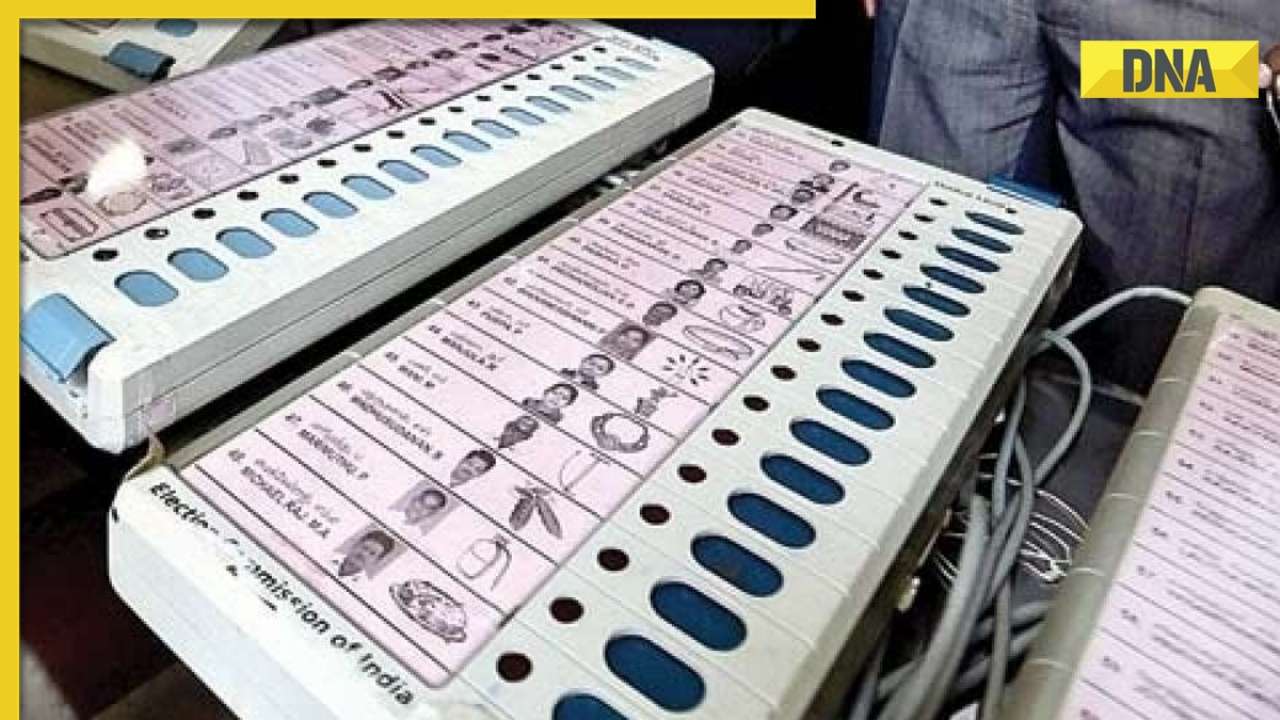Should we go low-fat, high-carb or low-carb, high-fat? For years, nutrition experts have swung between these two poles.
Should we go low-fat, high-carb or low-carb, high-fat? For years, nutrition experts have swung between these two poles. But new research shows that both these approaches can work for us, provided we don’t mix the two. Unfortunately, the food industry does precisely that, delivering a killer combo of carbs, fats and sugars that is hard for any of us to resist, writes Robert Lustig, Professor of Paediatrics at the University of California, San Francisco
Two seemingly benign nutritional maxims are at the root of all dietary evil: A calorie is a calorie, and You are what you eat. Both ideas are now so entrenched in public consciousness that they have become virtually unassailable. As a result, the food industry, aided and abetted by ostensibly well-meaning scientists and politicians, has afflicted humankind with the plague of chronic metabolic disease, which threatens to bankrupt health care worldwide.
Previously, one could have argued that these were affluent countries’ diseases, but the United Nations announced last year that chronic metabolic disease (including diabetes, heart disease, cancer, and dementia) is a bigger threat to the developing world than is infectious disease.
These two nutritional maxims give credence to the food industry’s self-serving corollaries: If a calorie is a calorie, then any food can be part of a balanced diet; and, if we are what we eat, then everyone chooses what they eat. Again, both are misleading.
Consider the following diets: Atkins (all fat and no carbohydrates); traditional Japanese (all carbohydrates and little fat); and Ornish (even less fat and carbohydrates with lots of fibre). All three help to maintain, and in some cases even improve, metabolic health, because the liver has to deal with only one energy source at a time.
That is how human bodies are designed to metabolise food. Our hunter ancestors ate fat, which was transported to the liver and broken down by the lipolytic pathway to deliver fatty acids to the mitochondria (the subcellular structures that burn food to create energy). On the occasion of a big kill, any excess dietary fatty acids were packaged into low-density lipoproteins and transported out of the liver to be stored in peripheral fat tissue. As a result, our forebears’ livers stayed healthy.
Meanwhile, our gatherer ancestors ate carbohydrates (polymers of glucose), which was also transported to the liver, via the glycolytic pathway, and broken down for energy. Any excess glucose stimulated the pancreas to release insulin, which transported glucose into peripheral fat tissue, and which also caused the liver to store glucose as glycogen (liver starch). So their livers also stayed healthy.
And nature did its part by supplying all naturally occurring foodstuffs with either fat or carbohydrate as the energy source, not both. Even fatty fruits — coconut, olives, avocados — are low in carbohydrate.
Our metabolisms started to malfunction when humans began consuming fat and carbohydrates at the same meal. The liver mitochondria could not keep up with the energy onslaught, and had no choice but to employ a little-used escape valve called "de novolipogenesis” (new fat-making) to turn excess energy substrate into liver fat.
Liver fat mucks up the workings of the liver. It is the root cause of the phenomenon known as “insulin resistance” and the primary process that drives chronic metabolic disease. In other words, neither fat nor carbohydrates are problematic — until they are combined. The food industry does precisely that, mixing more of both into our diet for palatability and shelf life, thereby intensifying insulin resistance and chronic metabolic disease.
But there is one exception to this formulation: sugar. Sucrose and high-fructose corn syrup are comprised of one molecule of glucose (not especially sweet) and one molecule of fructose (very sweet). While glucose is metabolised by the glycolytic pathway, fructose is metabolised by the lipolytic pathway, and is not insulin-regulated. Thus, when sugar is ingested in excess, the liver mitochondria are so overwhelmed that they have no choice but to build liver fat.
Prior to 1900, Americans consumed less than 30 grams of sugar per day, or about 6% of total calories. In 1977, it was 75 grams/day, and in 1994, up to 110 grams/day. Currently, adolescents average 150 grams/day, a five-fold increase in a century. In the past 50 years, consumption of sugar has also doubled worldwide. Worse yet, other than the ephemeral pleasure that it provides, there is not a single biochemical process that requires dietary fructose; it is a vestigial nutrient, left over from the evolutionary differentiation between plants and animals.
It is therefore clear that a calorie is not a calorie. Fats, carbohydrates, fructose, and glucose are all metabolised differently in the body. Furthermore, you are what you do with what you eat. Combining fat and carbohydrate places high demands on the metabolic process. And adding sugar is particularly egregious.
Indeed, while food companies would have you believe that sugar can be part of a balanced diet, the bottom line is that they have created an unbalanced one. Of the 600,000 food items available in the US, 80% are laced with added sugar. People cannot be held responsible for what they put in their mouths when their choices have been co-opted.
![submenu-img]() Viral video: Python escapes unscathed after fierce assault by aggressive mongoose gang, watch
Viral video: Python escapes unscathed after fierce assault by aggressive mongoose gang, watch![submenu-img]() Google banned over 2200000 apps from Play Store, removed 333000 bad accounts for…
Google banned over 2200000 apps from Play Store, removed 333000 bad accounts for…![submenu-img]() Once one of Bollywood's top heroines, this actress was slammed for kissing King Charles, ran from home, now she...
Once one of Bollywood's top heroines, this actress was slammed for kissing King Charles, ran from home, now she...![submenu-img]() Manipur Police personnel drove 2 Kuki women to mob that paraded them naked: CBI charge sheet
Manipur Police personnel drove 2 Kuki women to mob that paraded them naked: CBI charge sheet ![submenu-img]() Makarand Deshpande reveals reason behind Monkey Man’s delayed India release: ‘I feel because of…’
Makarand Deshpande reveals reason behind Monkey Man’s delayed India release: ‘I feel because of…’![submenu-img]() DNA Verified: Is CAA an anti-Muslim law? Centre terms news report as 'misleading'
DNA Verified: Is CAA an anti-Muslim law? Centre terms news report as 'misleading'![submenu-img]() DNA Verified: Lok Sabha Elections 2024 to be held on April 19? Know truth behind viral message
DNA Verified: Lok Sabha Elections 2024 to be held on April 19? Know truth behind viral message![submenu-img]() DNA Verified: Modi govt giving students free laptops under 'One Student One Laptop' scheme? Know truth here
DNA Verified: Modi govt giving students free laptops under 'One Student One Laptop' scheme? Know truth here![submenu-img]() DNA Verified: Shah Rukh Khan denies reports of his role in release of India's naval officers from Qatar
DNA Verified: Shah Rukh Khan denies reports of his role in release of India's naval officers from Qatar![submenu-img]() DNA Verified: Is govt providing Rs 1.6 lakh benefit to girls under PM Ladli Laxmi Yojana? Know truth
DNA Verified: Is govt providing Rs 1.6 lakh benefit to girls under PM Ladli Laxmi Yojana? Know truth![submenu-img]() Remember Heyy Babyy's cute 'Angel' Juanna Sanghvi? 20 year-old looks unrecognisable now, fans say 'her comeback will...'
Remember Heyy Babyy's cute 'Angel' Juanna Sanghvi? 20 year-old looks unrecognisable now, fans say 'her comeback will...'![submenu-img]() In pics: Arti Singh stuns in red lehenga as she ties the knot with beau Dipak Chauhan in dreamy wedding
In pics: Arti Singh stuns in red lehenga as she ties the knot with beau Dipak Chauhan in dreamy wedding![submenu-img]() Actors who died due to cosmetic surgeries
Actors who died due to cosmetic surgeries![submenu-img]() See inside pics: Malayalam star Aparna Das' dreamy wedding with Manjummel Boys actor Deepak Parambol
See inside pics: Malayalam star Aparna Das' dreamy wedding with Manjummel Boys actor Deepak Parambol ![submenu-img]() In pics: Salman Khan, Alia Bhatt, Rekha, Neetu Kapoor attend grand premiere of Sanjay Leela Bhansali's Heeramandi
In pics: Salman Khan, Alia Bhatt, Rekha, Neetu Kapoor attend grand premiere of Sanjay Leela Bhansali's Heeramandi![submenu-img]() DNA Explainer: Why Harvey Weinstein's rape conviction was overturned, will beleaguered Hollywood mogul get out of jail?
DNA Explainer: Why Harvey Weinstein's rape conviction was overturned, will beleaguered Hollywood mogul get out of jail?![submenu-img]() What is inheritance tax?
What is inheritance tax?![submenu-img]() DNA Explainer: What is cloud seeding which is blamed for wreaking havoc in Dubai?
DNA Explainer: What is cloud seeding which is blamed for wreaking havoc in Dubai?![submenu-img]() DNA Explainer: What is Israel's Arrow-3 defence system used to intercept Iran's missile attack?
DNA Explainer: What is Israel's Arrow-3 defence system used to intercept Iran's missile attack?![submenu-img]() DNA Explainer: How Iranian projectiles failed to breach iron-clad Israeli air defence
DNA Explainer: How Iranian projectiles failed to breach iron-clad Israeli air defence![submenu-img]() Once one of Bollywood's top heroines, this actress was slammed for kissing King Charles, ran from home, now she...
Once one of Bollywood's top heroines, this actress was slammed for kissing King Charles, ran from home, now she...![submenu-img]() Makarand Deshpande reveals reason behind Monkey Man’s delayed India release: ‘I feel because of…’
Makarand Deshpande reveals reason behind Monkey Man’s delayed India release: ‘I feel because of…’![submenu-img]() Meet actor, beaten up in school, failed police entrance exam, lived in garage, worked as driver, now worth Rs 650 crore
Meet actor, beaten up in school, failed police entrance exam, lived in garage, worked as driver, now worth Rs 650 crore![submenu-img]() Harman Baweja and wife Sasha Ramchandani blessed with a baby girl: Report
Harman Baweja and wife Sasha Ramchandani blessed with a baby girl: Report![submenu-img]() Parineeti Chopra says she didn't even know if Raghav Chadha was married, had children when she decided to marry him
Parineeti Chopra says she didn't even know if Raghav Chadha was married, had children when she decided to marry him![submenu-img]() IPL 2024: Marcus Stoinis, Mohsin Khan power Lucknow Super Giants to 4-wicket win over Mumbai Indians
IPL 2024: Marcus Stoinis, Mohsin Khan power Lucknow Super Giants to 4-wicket win over Mumbai Indians![submenu-img]() 'Horrifying, hope he keeps...': KKR co-owner Shahrukh Khan on Rishabh Pant's life-threatening car accident
'Horrifying, hope he keeps...': KKR co-owner Shahrukh Khan on Rishabh Pant's life-threatening car accident![submenu-img]() CSK vs PBKS, IPL 2024: Predicted playing XI, live streaming details, weather and pitch report
CSK vs PBKS, IPL 2024: Predicted playing XI, live streaming details, weather and pitch report![submenu-img]() CSK vs PBKS IPL 2024 Dream11 prediction: Fantasy cricket tips for Chennai Super Kings vs Punjab Kings
CSK vs PBKS IPL 2024 Dream11 prediction: Fantasy cricket tips for Chennai Super Kings vs Punjab Kings![submenu-img]() KKR's Harshit Rana fined 100 per cent of his match fees, handed 1-match ban for....
KKR's Harshit Rana fined 100 per cent of his match fees, handed 1-match ban for....![submenu-img]() Viral video: Python escapes unscathed after fierce assault by aggressive mongoose gang, watch
Viral video: Python escapes unscathed after fierce assault by aggressive mongoose gang, watch![submenu-img]() Where is the East India Company, which ruled India for 200 years, now?
Where is the East India Company, which ruled India for 200 years, now?![submenu-img]() Russian woman alleges Delhi airport official wrote his phone number on her ticket, video goes viral
Russian woman alleges Delhi airport official wrote his phone number on her ticket, video goes viral![submenu-img]() Viral video: School teachers build artificial pool in classroom for students, internet loves it
Viral video: School teachers build artificial pool in classroom for students, internet loves it![submenu-img]() Viral video: Wife and 11-year-old son of Bengaluru businessman become Jain monks, details inside
Viral video: Wife and 11-year-old son of Bengaluru businessman become Jain monks, details inside






































)




)
)
)
)
)
)